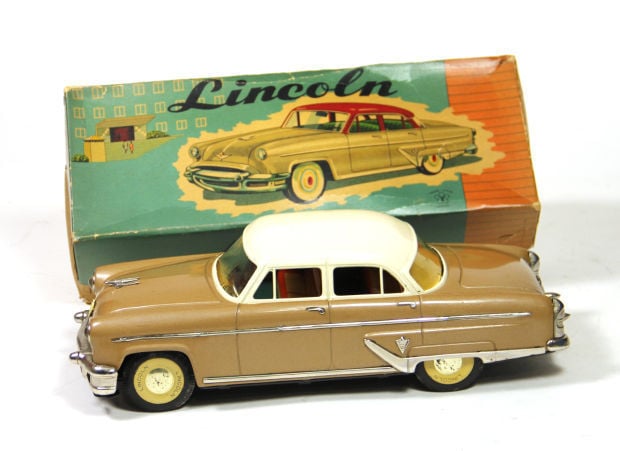Q: I’m wondering if our family heirloom has any intrinsic value. My grandfather said that his father, a doughboy in post-World War I France, traded his rations for this serving tray with a Russian stamp. The seller was a Czarist servant, a refugee who fled from the Bolsheviks.
A: Our reader adds that his tray has been in the family for four generations. That’s a long period — long enough for some real family lore to grow.
Seen in images sent, the treasure is a round, double-handle metal serving tray. A hammered stamp mark at the top is Russian, but barely legible. Metal composition is hard to determine, and we have no info on size.
To me, the metal looks like an alloy. My first thought was that there is nothing about the style or “look” of the tray that suggests anything special or rare.
Stuart Slavid has been director of the European furniture, decorative arts, silver and fine ceramics at the Massachusetts auction house Skinner Inc. (skinnerinc.com) for decades. Stands to reason he’d know a thing or two about a Russian metal tray.
Looking over the images, he told us the tray was “certainly not silver.” Slavid agrees that it is an alloy, and a non-precious one at that.
The mark is partially unreadable, but the plainness and utility look of the metal and shape suggest that the piece is more a survivor than a treasure.
Slavid suggests that the tray was originally intended for industrial use, perhaps in a hotel or similar service. That scenario fits with the reader’s story that it came from a “servant refugee.”
“We see many items where (family) sentiment far outweighs market value,” he added. In today’s market, the tray might bring $50.
Enjoy the tray for what it is. Not everything has to have value to be validated. You’re fortunate to have a piece of family history.
Q: We just inherited what looks like a very old print with the title “Red Roofs” by Julien Van Santen. It was printed in the Talio-Chrome process, then new. Another label reads that it was made for the Jordan Marsh picture galleries in Boston. We want to sell. Any info?
A: First, thanks for a detailed description. Hint: An image of the print would have been a great help.
But we persevered and do have some advice for this reader: Don’t book a cruise on possible results from the sale of this etching.
If we have ID’d the correct art and it shows a Venetian canal scene with figures on a bridge, that’s what he has, a color etching.
Belgian artist Van Santen dates to the late 19th to early 20th centuries. He’s not a widely collected artist.
Jordan Marsh is another story. Founded by Eben Jordan in 1841 and later partner Benjamin Marsh, it was a major department store in Boston. In time, JM grew into a chain and became part of the Federated Department Stores. After bankruptcy in 1996, it became part of Macy’s.
In sum, the print originally sold in the home furnishings department of a department store. And it was probably not inexpensive when bought.
At that time, mass market furniture stores and print outlets as we know them did not exist. Aspirational buyers flocked to upscale department stores for fashionable home decor. Decorators were for the very wealthy, but period department stores offered their services on-site.
Smart collectors know that times and tastes change. On www.liveauctioneers.com we found that a framed copy sold at auction in 2012 for $60. On www.worthpoint.com we spotted another framed version that sold the same year on eBay for $79.98.





